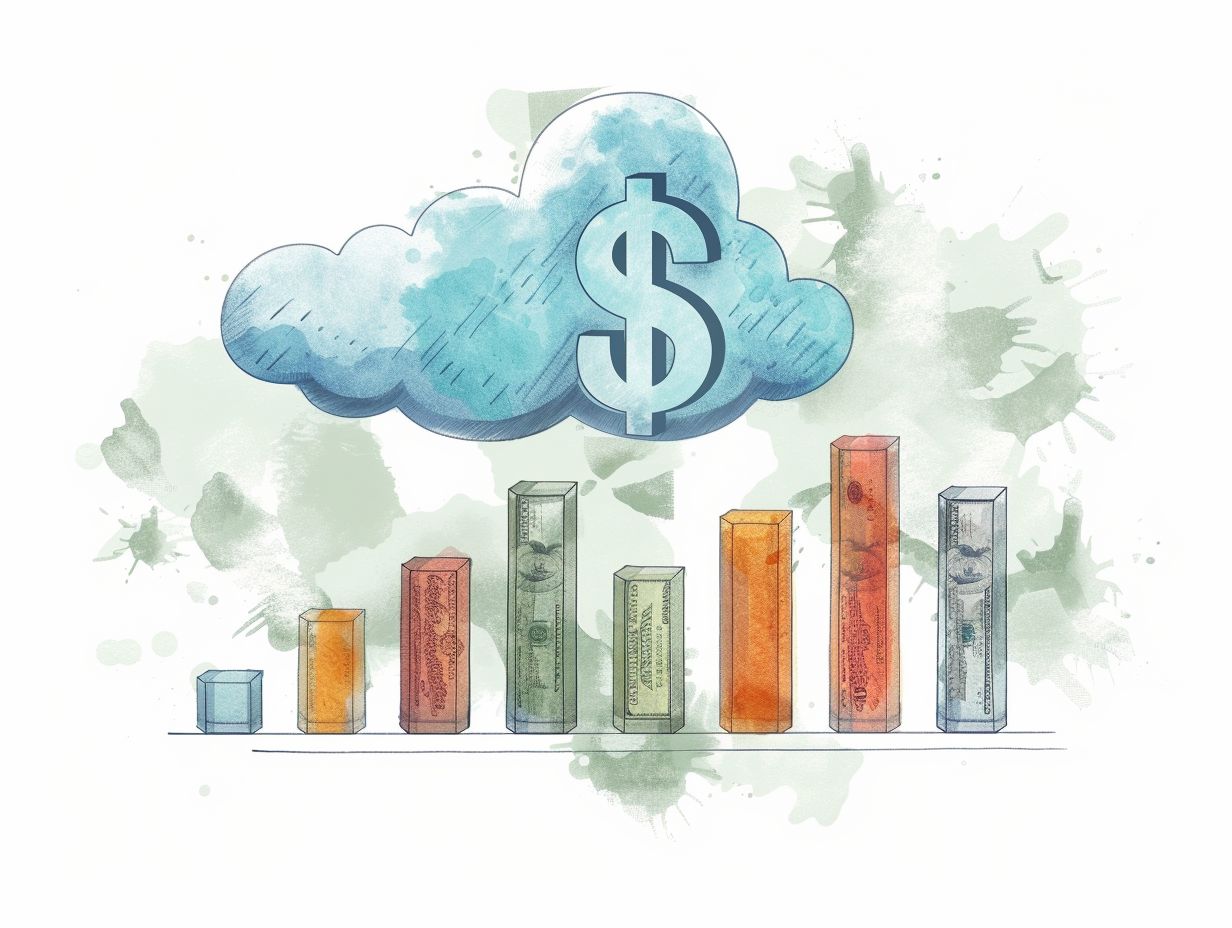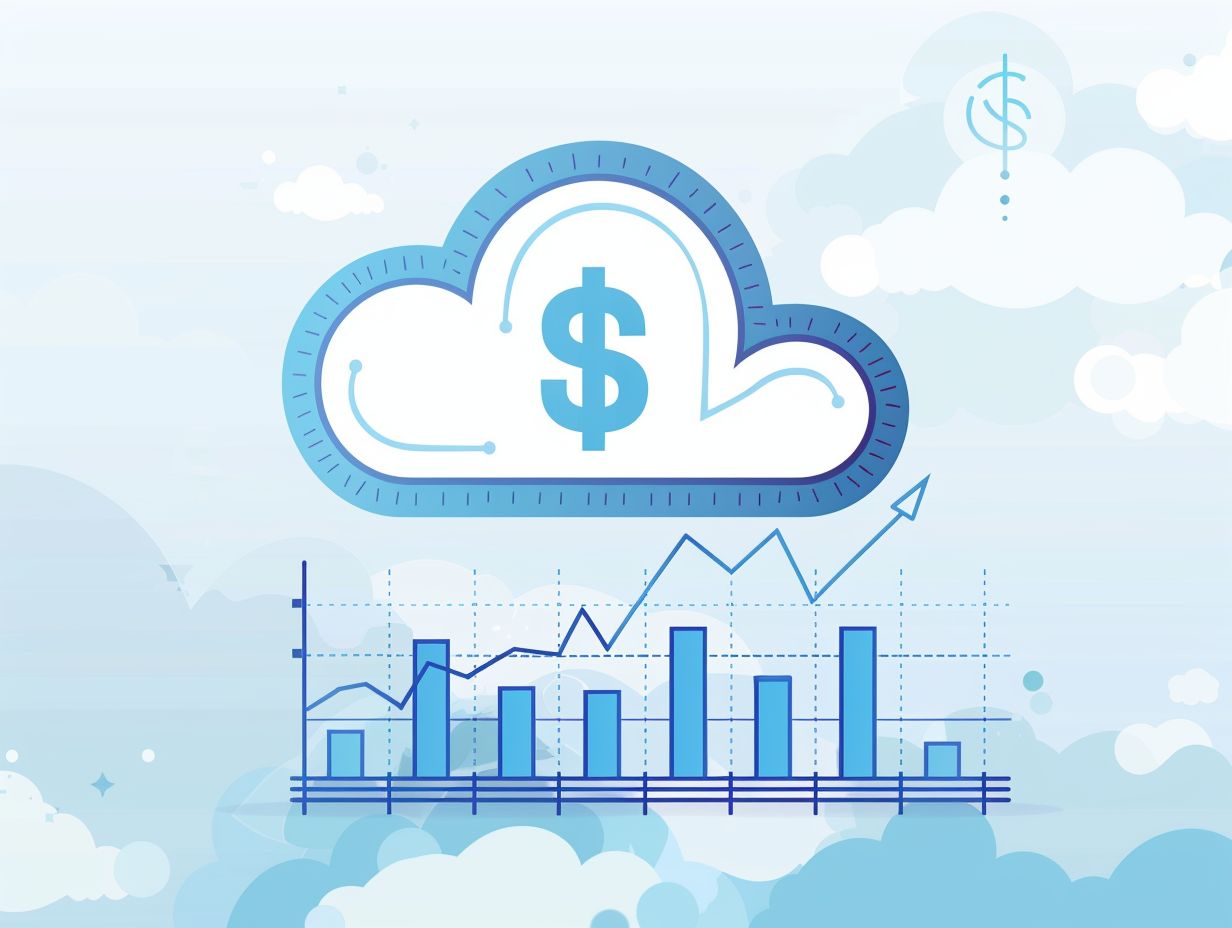If you are new to cloud computing and finding it challenging to grasp the fundamentals, this article is the perfect resource for you. It aims to define cloud computing, highlight its advantages, and delve into the factors influencing cloud computing expenses. The discussion will cover key cost drivers, methods for estimating costs, and strategies for effectively managing cloud computing expenses. Additionally, the article will provide insights into cost optimization techniques and best practices for maintaining control over costs in the realm of cloud computing. Get prepared to explore tools and resources that facilitate efficient cost management in the cloud computing domain.
Key Takeaways:

- Understand the basics of cloud computing to make informed decisions about cost management.
- Be aware of key cost drivers and use estimation techniques to accurately predict and manage cloud computing costs.
- Implement cost optimization strategies and best practices to effectively manage and reduce cloud computing expenses.
Understanding the Basics of Cloud Computing
Cloud computing refers to the delivery of computing services including servers, storage, databases, networking, software, and analytics over the internet, offering faster innovation, flexible resources, and economies of scale. By leveraging cloud computing, you and your organization can enjoy the benefits of scalability, allowing you to easily adjust your computing resources based on fluctuating demands. This flexibility ensures that you have access to the right amount of computing power at any given time, without having to invest in costly infrastructure upfront. The cost efficiency of cloud computing enables organizations to only pay for the resources they consume, rather than maintaining and managing physical servers themselves.
Defining Cloud Computing and its Benefits
Defining cloud computing involves understanding its key elements such as virtualization, resource pooling, on-demand self-service, and broad network access, leading to benefits such as improved resource utilization, cost savings, and enhanced scalability. Cloud computing’s intrinsic features allow businesses to optimize their ROI by reducing infrastructural costs and streamlining operations through shared resources. The ability to scale resources up or down on-demand ensures that organizations can adapt to fluctuating workloads efficiently. The flexibility of cloud services promotes resource efficiency by only utilizing the necessary amount of computing power, which enhances both cost-effectiveness and performance. This scalable nature of cloud computing aligns with modern business requirements, enableing companies to grow and innovate without being hindered by traditional IT constraints.
Factors Affecting Cloud Computing Costs
Various factors may influence your cloud computing expenses, such as resource allocation, instance types, data warehousing needs, and software licensing requirements, all of which collectively impact your overall cloud spending.
- Resource allocation strategies are pivotal in cost optimization as they ensure efficient utilization of computing resources.
- Instance configurations, including selecting the appropriate size and type of instances based on workload demands, can have a substantial impact on expenses.
- It is crucial to carefully manage software licensing implications to prevent unforeseen charges.
By analyzing and fine-tuning these variables, businesses can effectively control their cloud costs, achieve cost optimization, and fulfill their performance and scalability criteria.
Key Cost Drivers in Cloud Computing
 Key cost drivers in cloud computing include inefficient resource allocation, lack of cost visibility, and underutilized infrastructure. To enhance cost efficiency, it is crucial for you to leverage cloud intelligence tools. Resource inefficiencies can lead to overprovisioning, where resources are allocated beyond actual needs, resulting in unnecessary spending. Visibility gaps often emerge when organizations do not have insight into their cloud usage patterns, making it difficult to optimize costs efficiently. Implementing intelligent solutions such as automated resource scaling and cost monitoring tools can help address these challenges. By utilizing these tools, you can align your cloud spending with actual requirements to achieve optimal cost efficiency.
Key cost drivers in cloud computing include inefficient resource allocation, lack of cost visibility, and underutilized infrastructure. To enhance cost efficiency, it is crucial for you to leverage cloud intelligence tools. Resource inefficiencies can lead to overprovisioning, where resources are allocated beyond actual needs, resulting in unnecessary spending. Visibility gaps often emerge when organizations do not have insight into their cloud usage patterns, making it difficult to optimize costs efficiently. Implementing intelligent solutions such as automated resource scaling and cost monitoring tools can help address these challenges. By utilizing these tools, you can align your cloud spending with actual requirements to achieve optimal cost efficiency.
How to Estimate Cloud Computing Costs
Estimating your cloud computing costs requires developing a thorough budget that considers infrastructure provisioning, forecasting resource utilization, and implementing cost transparency measures. This ensures effective cost management and allocation. One crucial aspect to take into account when estimating costs is analyzing your current infrastructure needs and projected growth. This allows for accurate resource allocation and forecasting of usage trends. By establishing transparent protocols, you and your stakeholders can monitor expenditure patterns, pinpoint areas for optimization, and make well-informed decisions on cost-saving measures. Utilizing various provisioning strategies, such as on-demand scaling and reserved instances, can help optimize costs by aligning resource consumption with actual requirements. This enhances efficiency and reduces unnecessary expenses.
Strategies for Managing Cloud Computing Costs
To effectively manage cloud computing costs, you must implement robust strategies such as rightsizing resources, leveraging reserved instances, and optimizing storage solutions to minimize waste and enhance cost efficiency. These strategies require a thorough analysis of resource utilization patterns to identify underutilized instances that can be downsized or terminated to reduce unnecessary expenses. Proactive monitoring and scaling based on demand fluctuations can help prevent overprovisioning and ensure optimal resource allocation. Implementing automation tools to manage cloud deployments effectively and utilizing cost management platforms for detailed insights are also crucial in controlling cloud expenditure and maximizing cost savings.
Cost Optimization Techniques
Cost optimization techniques in cloud computing involve practices such as FinOps, leveraging cloud provider tools, and adopting automated optimization strategies to continuously monitor and adjust cloud resources for maximum cost efficiency. By embracing a FinOps approach, organizations can enhance cost transparency and accountability across teams for improved financial control in cloud deployments. Support from cloud providers is essential in this process, as they offer cost management tools and detailed billing insights to assist users in making informed decisions. Leveraging automated tools like auto-scaling, rightsizing, and cost allocation tags enables proactive cost optimization, ensuring resources are utilized efficiently based on workload demands and business priorities.
Best Practices for Cost Management
 In terms of cost management in cloud computing, you should follow best practices that include real-time monitoring of cloud spend, proactive cloud operations management, and utilizing cloud intelligence insights to optimize resource allocation and cost efficiency. Real-time monitoring of cloud spend entails continuously tracking usage patterns and costs. This allows businesses to identify potential cost-saving opportunities and prevent budget overruns. Implementing operational strategies like automation and workload optimization can further enhance cost management by maximizing resource utilization and minimizing unnecessary expenditures. Utilizing cloud intelligence tools enables organizations to make informed decisions based on data-driven insights, facilitating proactive adjustments to optimize performance and cost-effectiveness in the cloud environment.
In terms of cost management in cloud computing, you should follow best practices that include real-time monitoring of cloud spend, proactive cloud operations management, and utilizing cloud intelligence insights to optimize resource allocation and cost efficiency. Real-time monitoring of cloud spend entails continuously tracking usage patterns and costs. This allows businesses to identify potential cost-saving opportunities and prevent budget overruns. Implementing operational strategies like automation and workload optimization can further enhance cost management by maximizing resource utilization and minimizing unnecessary expenditures. Utilizing cloud intelligence tools enables organizations to make informed decisions based on data-driven insights, facilitating proactive adjustments to optimize performance and cost-effectiveness in the cloud environment.
Tools and Resources for Cloud Computing Cost Management
Various tools and resources are at your disposal for managing costs in cloud computing. These tools provide features like real-time monitoring, cost analysis, and visibility into your cloud expenses. They enable you to make informed decisions and optimize your spending. With these powerful tools, you can track your spending across different services and environments, allowing your business to allocate resources effectively and manage expenses. They offer functions such as budget forecasting and automated alerts for unusual costs, which are crucial for maintaining cost efficiency and sticking to your budget in cloud operations. By looking into detailed insights on usage patterns and trends, you can pinpoint areas for cost reduction and fine-tune your overall cloud spending strategy.
Popular Cost Management Tools
Popular cost management tools in cloud computing include AWS Cost Explorer, Azure Cost Management, and Google Cloud Cost Management. These tools offer features for cloud modeling, billing optimization, and detailed cost analysis to support effective cost control. These tools enable you to gain greater visibility into your cloud spending, allowing for cost allocation, budget forecasting, and resource optimization.
- AWS Cost Explorer provides customizable reports and cost breakdowns by service, region, or instance type.
- Azure Cost Management integrates seamlessly with Azure services, enabling you to track spending, set budgets, and receive alerts for cost overruns.
- Google Cloud Cost Management offers cost insights through interactive dashboards and forecasting capabilities, facilitating well-considered choices for cost-saving strategies.
Online Resources for Cost Management
Utilize online resources such as Densify, FinOps, and Cloud Advisors for efficient cloud computing cost management. These platforms offer valuable insights into cost intelligence, procurement strategies, and deployment best practices to optimize costs. These platforms are essential tools for organizations seeking to effectively manage their cloud costs. By utilizing the features provided by Densify and FinOps, businesses can access crucial cost intelligence, procurement guidance, and insights for optimizing deployment strategies. This enables them to make informed decisions, allocate resources efficiently, and maximize the return on investment from their cloud deployments. Moreover, these platforms assist in identifying potential cost-saving opportunities, pinpointing areas of excessive spending, and implementing strategies to enhance cost efficiency in cloud operations. By leveraging these resources, organizations can strategically manage their cloud costs and drive better financial outcomes.
Frequently Asked Questions

What is cloud computing cost management?
Cloud computing cost management refers to the practice of monitoring and controlling the expenses associated with using cloud computing services. This includes understanding and optimizing the costs of cloud resources such as storage, processing power, and network usage.
Why is it important for beginners to understand cloud computing cost management?
For beginners, it is crucial to understand cloud computing cost management in order to avoid overspending on cloud services. As a beginner, it can be easy to overlook certain costs and end up with unexpected charges. Understanding cost management can help save money and make the most out of cloud resources.
What are some common mistakes beginners make when it comes to managing cloud computing costs?
Some common mistakes include overestimating resource needs, failing to monitor usage, not taking advantage of cost-saving features, and not optimizing resource allocation. These mistakes can lead to overspending and inefficient use of cloud resources.
What are some tips for beginners to manage their cloud computing costs effectively?
Some tips for beginners include setting a budget, monitoring usage, choosing the right pricing model, utilizing cost-saving features such as reserved instances, and regularly reviewing and optimizing resource allocation. It is also helpful to work with a cloud provider that offers transparent and easy-to-understand cost management tools.
Are there any tools or services available to help beginners with cloud computing cost management?
Yes, there are various tools and services available to help beginners with cloud computing cost management. Some popular options include AWS Cost Explorer, Azure Cost Management, and Google Cloud Billing. These tools offer features such as cost tracking, budgeting, and cost optimization recommendations.
How can understanding cloud computing cost management benefit businesses?
For businesses, understanding cloud computing cost management can help save money, improve resource allocation, and increase efficiency. It can also provide better visibility and control over cloud expenses, leading to more informed financial decisions and overall cost savings.
